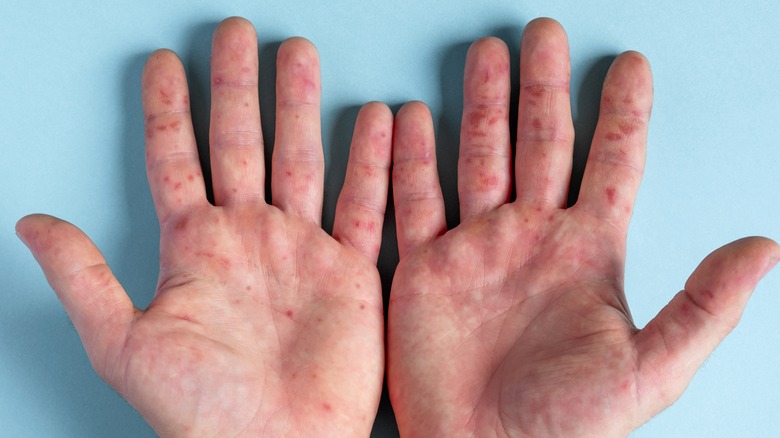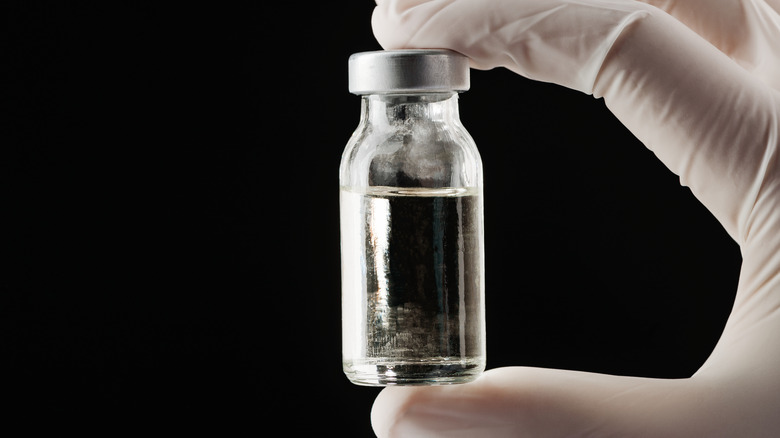Syphilis Explained: Causes, Symptoms, And Treatments
Sexually transmitted diseases (STDs) have been in existence for as long as mankind learned how to document their daily lives and their surroundings. Clay tablets, ancient paintings, papyri, poems, and books from all over the world dating back thousands of years ago suggest and describe the presence of several STDs such as herpes, warts, chlamydia, and syphilis.
In our present time, the World Health Organization (WHO) estimates that more than one million cases of sexually transmitted infections (STIs) occur every day all around the world, the majority of which are caused by one of four prevalent infections – chlamydia, gonorrhea, syphilis, and trichomoniasis. In the United States specifically, the latest data from the Centers for Disease Control and Prevention (CDC) show that in 2021, 2.5 million cases of chlamydia, gonorrhea, and syphilis were reported. Alarmingly, this number has been continuously and significantly rising over the years.
It may seem confusing, but STDs and STIs technically do not refer to the same thing. According to Tulane University, the main difference between the two terms can be inferred from their names. An STI is a bacterial, viral, or parasitic infection that does not necessarily cause disease. On the other hand, an STD is a progression from an STI, where infectious pathogens wreak havoc on the body and cause disease. Not all STIs lead to STDs, but all STDs come from an STI. Even with this distinction, however, it is still very common for STDs and STIs to be used interchangeably with one another.
What is syphilis?
Syphilis is an STD caused by the bacteria Treponema pallidum. According to StatPearls, T. pallidum is a very small organism that distinctively moves in a spiral motion. Although it is a persistent little bugger, it luckily does not survive outside of the body for a long time. T. pallidum can be transmitted from one person to another through direct physical contact with infectious lesions. These may include contact with the vagina, contact between the anus and genitals (anogenital), and contact between the mouth and genitals (orogenital).
Syphilis is further classified into different stages with varying symptoms. Although there is sometimes an overlap between the stages, they do not necessarily occur in order. Instead, a person with syphilis may progress from one stage to another, or jump back and forth between different stages. The four stages are primary, secondary, tertiary, and latent syphilis (via Mayo Clinic).
According to data collected by the CDC, close to 134,000 cases of syphilis and 2,148 cases of congenital syphilis were reported in 2020. Although these numbers may not seem tremendously large, comparing them to data collected in 2016 concerningly showed a 52% increase in syphilis cases and a 235% increase in congenital syphilis cases. Analysis of the data suggests that the COVID-19 pandemic had a significant role in this spike, when the focus of the healthcare system shifted to finding an end to COVID-19, and disease surveillance and preventive measures for other illnesses were unfortunately put on the back burner.
Risk factors of syphilis
Any person who engages in sexual activity is at risk of acquiring syphilis. This is especially true for people who have multiple sexual partners, since having more partners means putting yourself at a higher risk of getting exposed to people with the disease. The risk is even greater if you engage in sexual activities without using barrier contraception such as condoms (per Medical News Today).
According to StatPearls, syphilis is commonly seen in developing countries, in poor communities, and among people who have limited healthcare access. Additionally, the CDC reported that between 2016 and 2020, the increase in syphilis cases in the United States was prominently seen among American Indians/Alaska Natives and people of mixed races. However, African Americans remain to have the highest rate of reported cases. Additionally, although syphilis is more commonly seen among men, both men and women experienced an increase in syphilis cases, particularly adults between 25 to 29 years old.
Authors of a 2023 study published in the Open Forum Infectious Diseases journal looked deeper into the risk factors of syphilis among men who have sex with men in Australia. The results of their study suggest that men who have sex with men are at an even higher risk of syphilis if they have HIV or other STIs, take HIV prophylaxis, had a personal history of syphilis in the past, use injection drugs, have anal sex without condoms, or have more than four sexual partners in a span of 12 months.
Primary stage of syphilis
The American Academy of Dermatology (AAD) Association states that primary syphilis can occur anytime between 10 to 90 days after an infection from Treponema pallidum, but symptoms mostly develop around three weeks after having sex with an infected person. The characteristic symptom of primary syphilis is the appearance of one or multiple painless open sores called chancres, which can be seen on the genitals, inside the mouth, on the lips, within the vagina, or around the anus. These sores are highly contagious, and direct contact will cause the bacteria to spread. This mostly happens through sexual activity, but if sores are present in the mouth or on the lips, it can also be transmitted through kissing, although this is rare.
The sores are firm and round but are often unnoticeable, and according to Healthline, sometimes the only symptom a person will notice are swollen lymph nodes. This is why syphilis can easily be spread from one person to another. Chancres may persist for as long as six weeks, but even if they disappear on their own, the bacteria still stays in the body, and it can cause an even more severe reaction and progress to the next stage if it is not treated properly.
Secondary stage of syphilis
The secondary stage of syphilis occurs around two to eight weeks after you first get infected with primary syphilis (per Healthline). According to a 2016 study published in Head and Neck Pathology, around 25% of people who get infected with Treponema pallidum progress to this stage.
If a person is unable to get treatment for syphilis during the primary stage, the chancres or open sores that developed during that time gets replaced by a rash. Buoy Health describes the rash as rough, reddish-brown, and widespread, which may appear on one or more areas of the body. Characteristically, the rash is not usually itchy, and can involve the palms of your hands and soles of your feet. Your lymph nodes may remain swollen, and you may develop sores that look like warts. You may also experience other symptoms such as fever, weakness, muscle pain, weight loss, headache, and hair loss. Similar to the primary stage of syphilis, secondary syphilis is highly contagious, and can be spread through direct physical contact. Without treatment, symptoms will go away and come back episodically, often lasting for months to years. With the bacteria still causing trouble in your body, secondary syphilis can move to the latent phase, or progress to the worst of the four stages — tertiary syphilis (via Cleveland Clinic).
Latent stage of syphilis
A person has latent syphilis when the disease is dormant and does not cause any symptoms. According to the University of Montana, it can be further divided into early latent and late latent. Syphilis in the early latent phase is infectious, while syphilis in the late latent phase is not. An exception to this are pregnant women, who are able to pass the infection to their baby so long as they are infected with the bacterium (per ScienceDirect).
Following these definitions, if syphilis in the late latent stage is not infectious and does not show any symptoms, you may wonder how you can distinguish the late latent phase from not having the disease at all. The answer can be found in blood test results. People with latent syphilis (both early and late) will have evidence of infection in their blood, while people without syphilis or those who have been cured will not. Late latent syphilis also entails that more than a year has passed since a person initially acquired the infection.
If the time from initial infection to the discovery of latent syphilis is unknown, a person is classified as having latent syphilis of unknown duration (via University of Montana). Latent syphilis begins at the end of the secondary stage of syphilis, and may persist throughout a person's lifetime. It is also possible for a person to have latent syphilis without ever having any symptoms of primary or secondary syphilis.
Tertiary stage of syphilis
Tertiary syphilis (also known as late syphilis) occurs in people who have had untreated syphilis for a long time, usually years or even decades. Around one-third of people with untreated syphilis progress to the tertiary stage. Osmosis explains that although it is associated with devastating signs and symptoms, tertiary syphilis is not contagious. During the early stages, Treponema pallidum multiplies until it reaches great numbers and spreads throughout the body by circulating in the blood. As a person progresses to the late stages, the bacterial load naturally decreases, and T. pallidum sets up shop in capillaries that supply several organs and tissues. Normally, our immune system does a great job of removing harmful substances from our body. But in the case of syphilis, as our immune system gets to work, it also ends up destroying some of our cells in the process, which leads to the signs and symptoms associated with tertiary syphilis.
If primary syphilis presents with chancres and secondary syphilis presents with a widespread rash, tertiary syphilis presents with gummas — deep sores that can develop on the skin, lungs, liver, or bone and cause damage to their surrounding areas. Like other stages, proper treatment can prevent the disease from getting worse. Unfortunately, however, the damage that occurs in tertiary syphilis is irreversible (via the AAD Association).
Additionally, tertiary syphilis can lead to several other complications, particularly affecting the nervous system (neurosyphilis), heart and blood vessels (cardiovascular syphilis), eyes (ocular syphilis), and ears (otosyphilis).
Neurosyphilis
The five types of neurosyphilis, according to the National Institute of Neurological Disorders and Stroke (NINDS) are asymptomatic neurosyphilis, meningeal syphilis, meningovascular syphilis, general paresis, and tabes dorsalis.
Asymptomatic neurosyphilis is the most common type. People with this disease will have no symptoms, but syphilis can be detected in cerebrospinal fluid (CSF) samples. When syphilis spreads to the lining of the brain (meninges) and causes inflammation, meningeal syphilis occurs (via StatPearls). This can happen anytime during the initial weeks or years of infection. People may experience headaches, neck pain or stiffness, nausea, vomiting, light sensitivity, loss of vision, hearing loss, cranial nerve damage and seizures. On the other hand, meningovascular syphilis develops when there is inflammation of the meninges, combined with impaired blood supply to the brain. It may occur within months to years after initial infection, and can lead to headaches, nausea, vomiting, vertigo, lower extremity weakness, loss of sensation, loss of muscle mass, and strokes.
People with syphilis may experience general paresis anytime between three and 30 years following infection. It happens because long-term infection and inflammation causes the brain cells to shrink and die. Initially, people may experience personality and behavioral changes, sleep problems, and forgetfulness. Eventually, this may progress to unstable mood swings, confusion, delirium, depression, mania, and seizures.
Finally, tabes dorsalis can develop between five and 50 years from initial infection. It occurs when syphilis causes damage to the spinal cord. People with this condition may experience imbalance, shooting pain, bladder problems, numbness, and changes in vision.
Other complications of syphilis
Syphilis can spread to the heart and blood vessels. This condition is called cardiovascular syphilis. According to DoveMed, this can happen between 10 and 30 years after a person is initially infected with syphilis. Arteries can become inflamed and impair blood flow, and the heart valves can get injured, leading to several cardiac problems like angina, aneurysms, heart attacks, heart failure, and incompetent heart valves. Nonspecific symptoms that can be associated with these problems include dry cough, chest or back pain, hoarse voice, and difficulty swallowing. If left untreated, cardiovascular syphilis can eventually lead to death.
Ocular syphilis, or syphilis infection of the eyes, can occur at any stage of infection and can affect virtually any structure of the eye (e.g., uvea, optic nerve, retina). Not only can this condition cause blurring of your vision, but it can also lead to permanent blindness. It may also be the first thing a person infected with syphilis experiences, which is why the CDC advises people to get screened for syphilis if they suddenly develop changes in their vision. Syphilis in the ears or otosyphilis can also be the first presentation of a syphilis infection. It can cause sudden or progressive permanent hearing loss on one or both ears, ringing in the ears, and vertigo. Because these symptoms can easily be misdiagnosed as another condition (e.g., Meniere's disease, benign paroxysmal positional vertigo), screening for syphilis should also be performed if you develop any of the symptoms.
Syphilis and HIV
Human immunodeficiency virus (HIV) is an STI that if left untreated can progress to a life-threatening STD called acquired immunodeficiency syndrome (AIDS). The virus spreads from one person to another through contact with bodily fluids and sharing needles. A mother with HIV can also spread the virus to her baby during pregnancy, delivery, and breastfeeding. HIV/AIDS causes disease by weakening and overpowering your immune system, which eventually causes widespread disease, and potentially death, without treatment (per Mayo Clinic).
Although HIV is a virus and syphilis is caused by a bacterium, a person can be infected with both at the same time. Having both infections means being more at risk of severe disease and challenges to treatment. According to Healthline, if you have syphilis, you are more at risk of contracting HIV. Similarly, if you have HIV, not only are you more at risk of getting syphilis, but you are also susceptible to repeat infections. Syphilis can also cause people with HIV to have greater concentrations of the virus in their blood (i.e., high viral load). Not only does this translate to a more severe disease, but it also means that you are a lot more contagious. Syphilis in people with HIV also progresses more rapidly compared to people without HIV. Additionally, it is a lot harder to treat syphilis in HIV-positive individuals, especially ones who have low antibody levels, have had syphilis in the past, and have CD4 counts less than 350 cells per milliliter.
Syphilis and pregnancy
Syphilis is part of the TORCH syndrome, an umbrella term for infectious diseases that can be passed from mother to fetus and cause several complications (per Cleveland Clinic). Whether you get syphilis while pregnant or have a history of untreated syphilis and then get pregnant, you still run the risk of transmitting the bacterium to your unborn baby. Because of this, almost all states require women to be screened for syphilis during their first prenatal care visit, among other things. Even if a pregnant woman is not able to have regular appointments with their obstetrician, they should still get tested for syphilis preferably on their first pregnancy consultation, regardless of how far along they are into their pregnancy. Pregnant women are more at risk of acquiring syphilis if they are sexually active with multiple partners, use injection drugs, do not establish prenatal care, are incarcerated, have a partner who is incarcerated, and have unstable housing conditions or are homeless (via the CDC).
According to the American Pregnancy Association, syphilis during pregnancy can lead to premature births, low birth weight, stillbirths, miscarriages, fetal organ damage, and congenital syphilis. If left untreated, almost all mothers with syphilis will transmit the bacteria to their babies, and 40% of those babies will not survive. After delivery, the National Institute of Health states that women with syphilis can breastfeed their baby or pump milk, as long as there are no sores on any part of the breast that can come into contact with the baby or pumping equipment.
Congenital syphilis
When a woman gets pregnant, not only does she have her unborn baby growing inside her, but they are also physically connected to each other and share blood and nutrients necessary for life. This connection is unlike any other bond, but with it comes many risks as well. Less serious or easily treatable infections acquired by the mother can be severe or deadly for the unborn baby, an example of which is syphilis.
Congenital syphilis is a lifelong condition that occurs in babies born from mothers with syphilis. It can lead to numerous complications, including yellowing of the skin and eyes, enlargement of the liver and spleen, low red blood cell count, diffuse rash, shedding of the skin, high cholesterol, hair loss, swelling of the brain and spinal cord, mental health issues, and pneumonia. Without treatment, more health and development problems can occur, such as bone and joint pain, curving out of the shins (saber shin), flattening of the nose (saddle nose), deformed teeth (Hutchinson teeth), vision and hearing problems, paralysis, seizures, and developmental milestone delays.
Fortunately, not all babies born with congenital syphilis will have symptoms, and congenital syphilis is treatable with the right medication. However, if the infection is not identified early and treatment is not initiated, there is a high probability that the baby will develop life-threatening problems along the way. This can happen as early as the first few weeks of life, or it may not happen until several years later (via the CDC).
How is syphilis diagnosed?
There are two main ways a doctor can check for syphilis. One is through the use of dark field microscopy, and the other is by means of taking a blood sample. According to the American Academy of Family Physicians (AAFP), dark field microscopy checks for the presence of Treponema pallidum by taking a sample from an active lesion. The area is first cleansed and scraped gently until fluid from the lesion appears. The fluid is collected and placed on a glass slide to be examined under a specialized microscope. The test is considered positive if corkscrew-shaped bacteria are found in the sample. However, because this process is dependent on several unpredictable factors such as the experience level of the person performing the test, a negative result is only confirmed if three samples, each taken at different days, consistently show negative results.
Blood tests can be treponemal or nontreponemal. Nontreponemal tests detect antibodies in the blood that are positive in, but not specific to, syphilis (per StatPearls). These include the venereal disease research laboratory (VDRL) test and the rapid plasma reagin (RPR) test. On the other hand, treponemal tests detect antibodies specific to syphilis. These include the fluorescent treponemal antibody absorption assay (FTA-ABS) and the T. pallidum particle agglutination assay (TP-PA).
The CDC adds that in people presenting with signs and symptoms of neurosyphilis, obtaining a sample of their cerebrospinal fluid (CSF) and analyzing it for evidence of infection and presence of certain antibodies is often necessary.
Treatment options for syphilis
Primary, secondary, and early latent stages of syphilis is treated using a single dose of benzathine penicillin G injected into the muscle (per the University of Montana). If a person is allergic to penicillin and is not pregnant, they can be prescribed doxycycline or tetracycline for two weeks. People with late latent syphilis, late syphilis of unknown duration, or tertiary syphilis are given three doses of benzathine penicillin G at one-week intervals. If they are allergic to penicillin, they are also prescribed doxycycline or tetracycline, but for four weeks instead of two. If a person with tertiary syphilis has evidence of neurosyphilis, ocular syphilis, or otosyphilis, they are given aqueous crystalline penicillin G through their vein for 10 to 14 days. If they are allergic, procaine penicillin G is injected to their muscle for 10 to 14 days, and they are prescribed probenecid for 10 to 14 days.
Mayo Clinic adds that penicillin is the only safe and effective treatment for syphilis in women who are pregnant. Therefore, if they are allergic to penicillin, they undergo a desensitization process to help their bodies overcome their allergy.
An important thing to note is that people undergoing treatment for syphilis may experience a unique reaction during the first day of their treatment (via StatPearls). Called the Jarisch Herxheimer reaction, it usually presents as fever, chills, nausea, vomiting, headache, fast heartbeat, low blood pressure, flushing, muscle ache, and worsening of skin lesions. This needs to be monitored closely for worsening symptoms, but otherwise, it typically goes away on its own.
How to prevent syphilis
Given that syphilis is most commonly spread through sexual activity, one of the best ways to protect yourself is by abstaining from sex or by using barrier protection such as condoms and dental dams (per Planned Parenthood). You should also make it a point to get regularly tested for STDs, especially if you have new or multiple sexual partners.
It is important to know that you acquire syphilis by having direct physical contact with a chancre or sore, mostly during vaginal, anal, or oral sex. This means that you typically will not get syphilis from having physical contact with surfaces or objects such as toilet seats, doorknobs, pools, hot tubs, clothes, or shared utensils (via the CDC). Additionally, screening for syphilis should be done for high-risk women, all pregnant women during their first prenatal visit and again at 28 weeks gestation and at delivery if they are high-risk, high-risk men who have sex with women, men who have sex with men, transgender and gender diverse people, and people with HIV (per the CDC).
If you have been diagnosed with syphilis, you should inform all of your sexual partners of your condition to protect them from getting infected as well. The University of Montana adds that if you have been exposed to a partner with syphilis, you should get tested immediately. If the exposure happened less than three months prior, you will get treated for syphilis. Otherwise, the decision to treat will rely on your test results.















